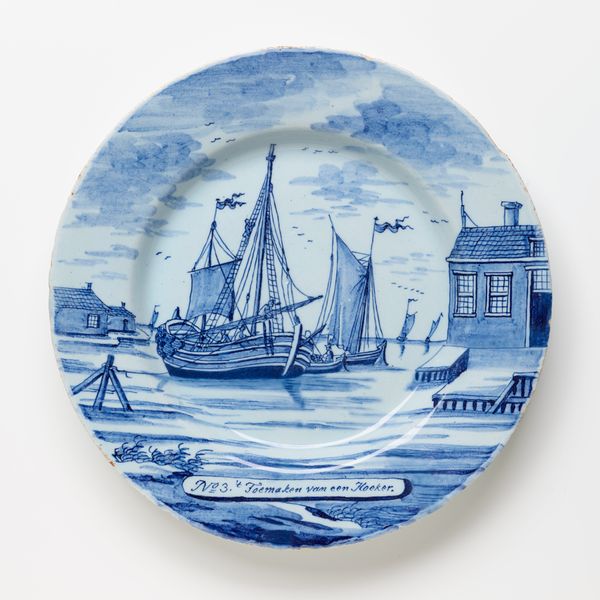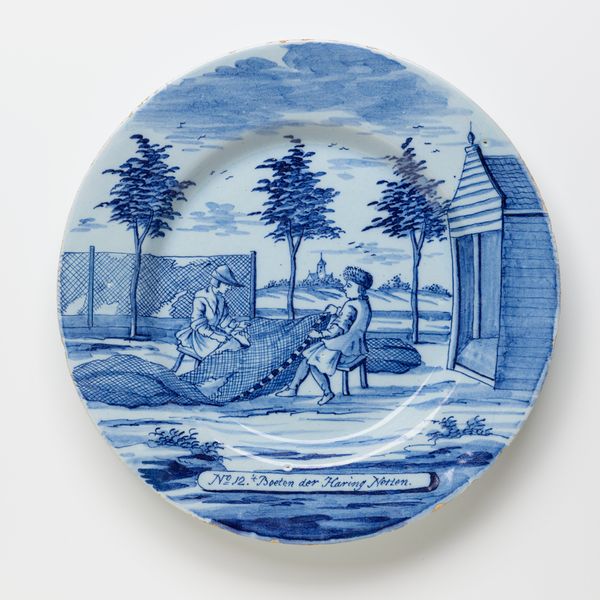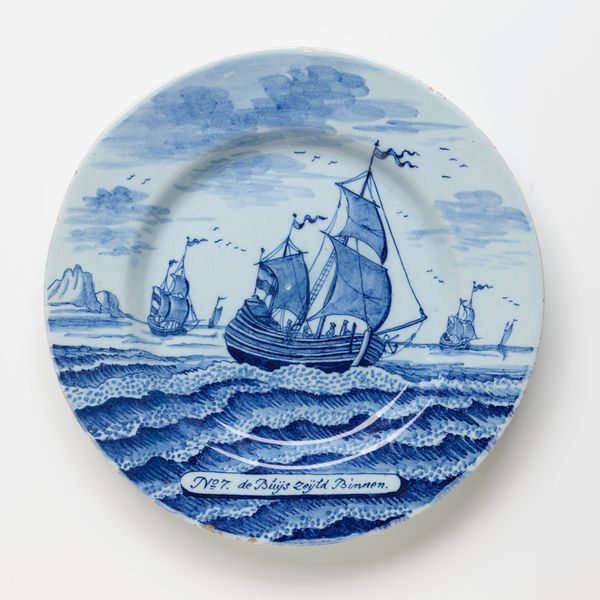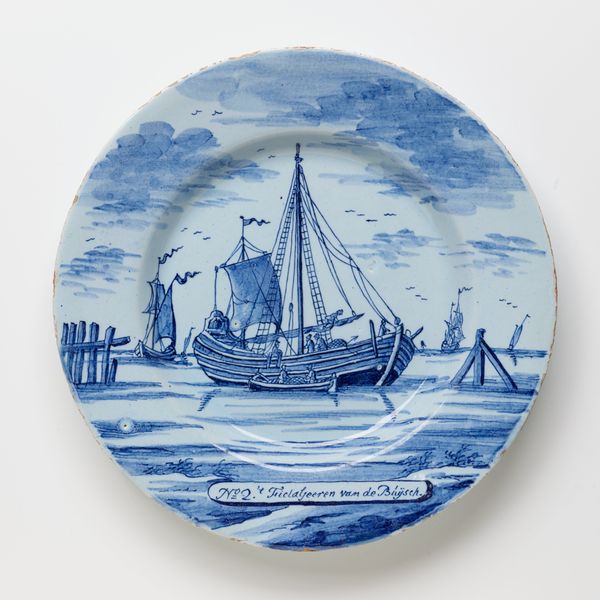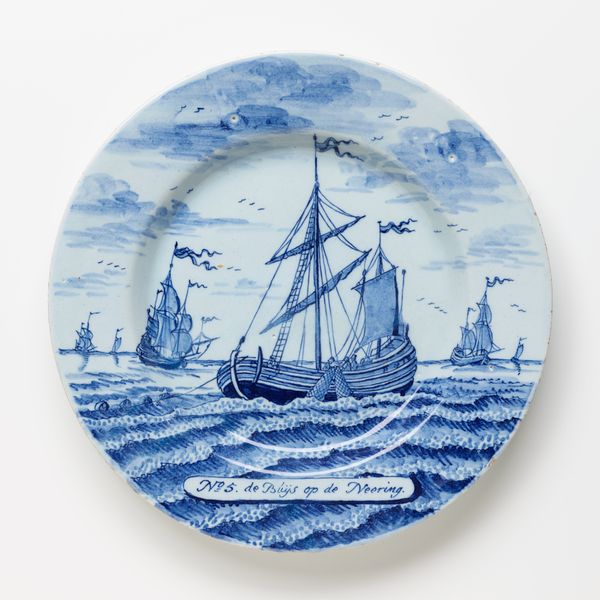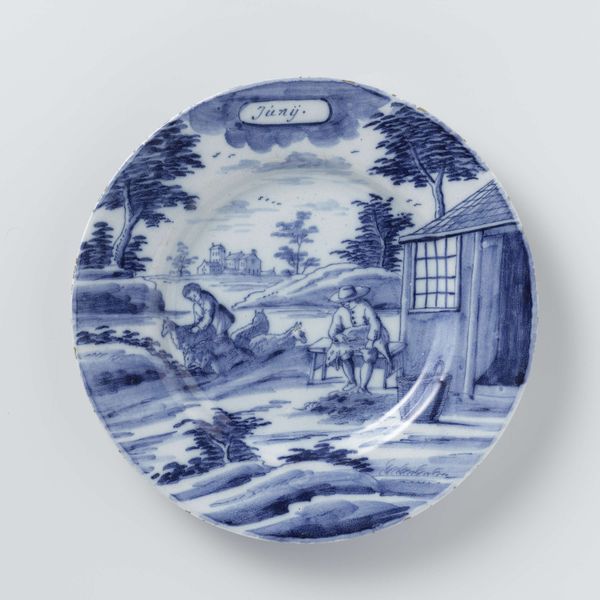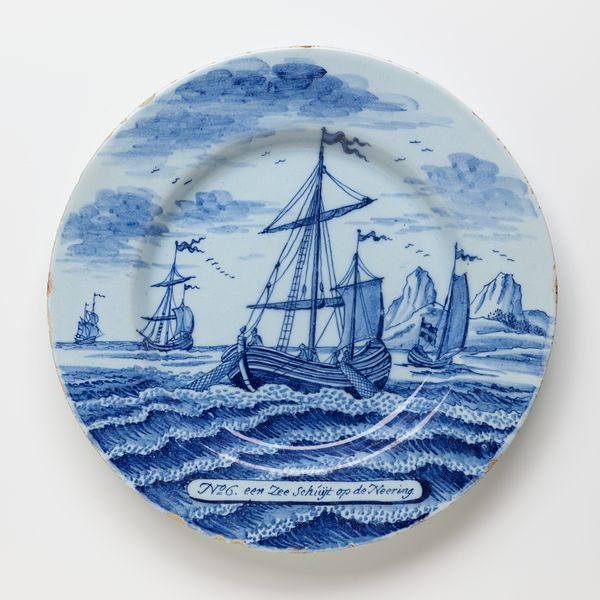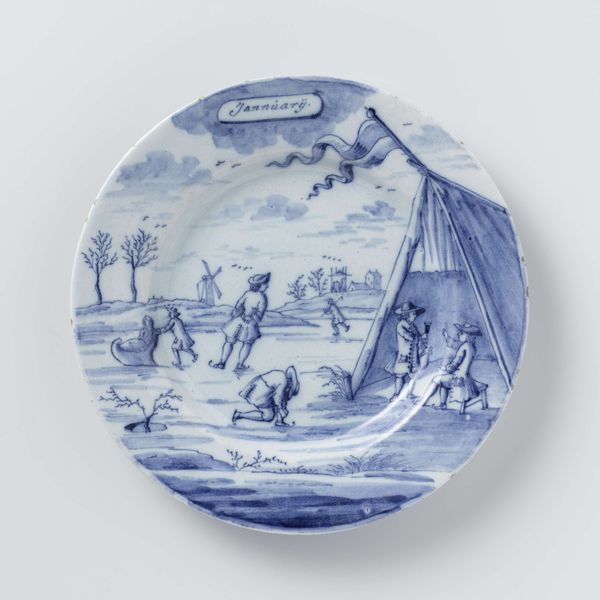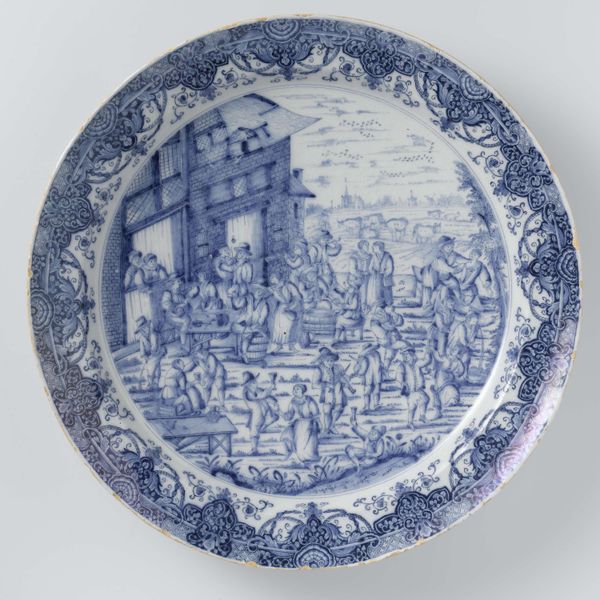
print, ceramic, earthenware
# print
#
landscape
#
ceramic
#
earthenware
#
genre-painting
Dimensions: 1 × 9 × 9 in. (2.54 × 22.86 × 22.86 cm)
Copyright: Public Domain
Editor: This is "No. 1", an earthenware plate created around 1780 by the Porcelain Axe Factory. I’m struck by its domestic, almost cozy scene despite depicting what seems to be a pretty rugged seaside landscape. How might this object have been perceived in its time? Curator: It’s a fascinating piece, isn't it? These Delftware plates weren’t just functional objects; they served as accessible art for the growing middle class. Notice how it depicts everyday life. This 'genre-painting' on ceramic becomes a social commentary, of sorts. What do you think the choice of portraying people mending nets along with ships at sea is conveying? Editor: Perhaps the interdependency of land and sea. Their livelihood depends on successful fishing, and it’s everyone’s job to support it. Also, it projects an image of community… everyone works together for a common purpose. Curator: Exactly! Delftware often played a role in shaping and reinforcing national identity. Consider the broader context: the Dutch Republic, its naval power, its booming economy. The plate serves as a sort of propaganda almost. It subtly celebrates Dutch prosperity linked to their maritime activities and the everyday labors supporting that. Does that shift your initial read of 'coziness'? Editor: Definitely. What seemed cozy is also a strategic visual argument about Dutch economic strength and national unity. Almost like, ‘buy local.’ Curator: Precisely. It’s a fascinating example of how seemingly simple artwork can reflect and shape socio-political currents. This one plate contains so many subtle visual cues that inform how the Dutch saw themselves. Editor: I see the work and the medium itself in a whole new light now! It's not just decoration, but also documentation and social construction.
Comments
minneapolisinstituteofart almost 2 years ago
⋮
This series of twelve plates is painted with scenes related to fishing for herring. While undistinguished in appearance, this silver fish was an abundant source of food in the North Sea and supported a vast fishing industry in the Netherlands. Herring fishing accounted for such a large percentage of the wealth of the Dutch Republic that Amsterdam was said to have been built on herring bones.
Join the conversation
Join millions of artists and users on Artera today and experience the ultimate creative platform.
